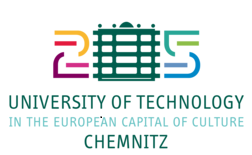Resisting Invisibility: Immigrant Youth in Higher Education
DOI:
https://doi.org/10.71514/jssal/2026.195Keywords:
Immigrant students, social identity, discrimination, higher educationAbstract
This study aims to explore the educational experiences of immigrant students in higher education through the lens of Social Identity Theory. The research was designed using a qualitative approach, with focus group interviews conducted with 15 immigrant students. The data were analyzed thematically. The findings reveal that students struggle to develop a sense of belonging in the school environment, face discrimination, and employ various coping strategies. Particularly, issues such as social invisibility, the us-them divide, and microaggressions negatively affect immigrant students' educational experiences. However, social solidarity networks and individual resilience mechanisms contribute to the students' adaptation process. The study's findings provide significant implications for inclusive educational policies and practices.
Downloads
References
Adams, B. G., Naudé, L., Nel, J. A., Vijver, F. J. R. van de, Laher, S., Louw, J., & Tadi, F. (2018). When There Are Only Minorities. Emerging Adulthood, 6(1), 7. https://doi.org/10.1177/2167696817752755
Akın, G., & Sani-bozkurt, S. (2021). Okul öncesi dönem tipik gelişim gösteren çocukların özel gereksinimli çocukların bireysel farklılıklarına ve sosyal kabulüne yönelik görüşleri. Anadolu Journal of Educational Sciences International, 11(1), 226-249. https://doi.org/10.18039/ajesi.737698
Antonsich, M. (2010). Searching for Belonging – An Analytical Framework. Geography Compass, 4(6), 644-659. https://doi.org/10.1111/j.1749-8198.2009.00317.x
Ajjawi, R., Dracup, M., Zacharias, N., Bennett, S., & Boud, D. (2019). Persisting students’ explanations of and emotional responses to academic failure. Higher Education Research & Development, 39(2), 185. https://doi.org/10.1080/07294360.2019.1664999
Alisa, S. (2021). The relationship between the formation of students' cultural identity and. SHS Web of Conferences, 101, 3043. https://doi.org/10.1051/shsconf/202110103043
Altugan, A. S. (2015). The Relationship Between Cultural Identity and Learning. Procedia - Social and Behavioral Sciences, 186, 1159. https://doi.org/10.1016/j.sbspro.2015.04.161
Arnot, M., Pinson, H., & Candappa, M. (2009). Compassion, caring, and justice: teachers’ strategies to maintain moral integrity in the face of national hostility to the “non‐citizen.” Educational Review, 61(3), 249–264. https://doi.org/10.1080/00131910903045906
Ashforth, B. E., & Mael, F. A. (1989). Social Identity Theory and the Organization. Academy of Management Review, 14(1), 20. https://doi.org/10.5465/amr.1989.4278999
Atan, A., & Buluş, M. (2020). The relationship between communication skills and interpersonal problem-solving skills in university students. Journal of Education and Humanities: Theory and Practice, 11(21), 1–24.
Bayram Özdemir, S., & Özdemir, M. (2020). The role of perceived inter-ethnic classroom climate in adolescents’ engagement in ethnic victimization: For whom does it work?. Journal of Youth and Adolescence, 49(6), 1328-1340. https://doi.org/10.1007/s10964-020-01228-8
Bat‐Chava, Y. (2000). Diversity of Deaf Identities. American Annals of the Deaf, 145(5), 420. https://doi.org/10.1353/aad.2012.0176
Baumeister, R. F., & Leary, M. R. (1995). The need to belong: Desire for interpersonal attachments as a fundamental human motivation. Psychological Bulletin, 117(3), 497–529. https://doi.org/10.1037/0033-2909.117.3.497
Berry, J. W. (1997). Immigration, acculturation, and adaptation. Applied Psychology, 46(1), 5–34. https://doi.org/10.1111/j.1464-0597.1997.tb01087.x
Braun, V., & Clarke, V. (2006). Using thematic analysis in psychology. Qualitative research in psychology, 3(2), 77-101.
Brown, R. (2000). Social identity theory: past achievements, current problems and future challenges. European Journal of Social Psychology, 30(6), 745. https://doi.org/10.1002/1099-0992(200011/12)30:6<745::aid-ejsp24>3.0.co;2-o
Cassidy, S. (2015). Resilience Building in Students: The Role of Academic Self-Efficacy. Frontiers in Psychology, 6. https://doi.org/10.3389/fpsyg.2015.01781
Cindiloğlu, M. (2017). The Effects of Perceived Organizational Support On Emotional Expression in Organızations. Hitit University Journal of Social Sciences Institute, Year, 10, 1043-1060.
Cummins, J. (2000). Academic Language Learning, Transformative Pedagogy, and Information Technology: Towards a Critical Balance on JSTOR. TESOL Quarterly, 537. https://doi.org/3587742
Cummins, J. (2014). Beyond language: Academic communication and student success. Linguistics and Education, 26, 145. https://doi.org/10.1016/j.linged.2014.01.006
Curatman, A., Suroso, A., Junaedi, J., Maulana, Y., Rahmadi, R., & Maulany, S. (2019). Could the Loyalty Program Increase Store Loyalty? https://doi.org/10.2991/isseh-18.2019.29
Charman, S., & Tyson, J. (2023). Over and out: the damaged and conflicting identities of officers voluntarily resigning from the police service. Policing & Society, 33(7), 767. https://doi.org/10.1080/10439463.2023.2200249
Creswell, J. W. (2013). Qualitative inquiry and research design: Choosing among five approaches (3rd ed.). SAGE Publications.
Çutuk, Z., & Kaya, Z. (2018). The relation between identity types and acculturation strategies of university students. International Journal of Society Researches, 13(21), 1453–1472.
Dadak, E. A., & Demir, N. (2020). Sosyal kimlik kuramı bağlamında bireylerin kimlik tanımlamaları: Kocaeli kafkas kültür derneği örneklemi. Hacettepe Üniversitesi Edebiyat Fakültesi Dergisi, 37(1), 11-23. https://doi.org/10.32600/huefd.585316
Delpit, L. (2006). Other people’s children: Cultural conflict in the classroom. The New Press.
Draper, G., & Dingle, G. A. (2021). “It’s Not the Same”: A Comparison of the Psychological Needs Satisfied by Musical Group Activities in Face to Face and Virtual Modes. Frontiers in Psychology, 12. https://doi.org/10.3389/fpsyg.2021.646292
Ellemers, N., Gilder, D. de, & Haslam, S. A. (2004). Motivating Individuals and Groups at Work: A Social Identity Perspective on Leadership and Group Performance. Academy of Management Review, 29(3), 459. https://doi.org/10.5465/amr.2004.13670967
Edison, B., Christino, M. A., & Rizzone, K. (2021). Athletic Identity in Youth Athletes: A Systematic Review of the Literature [Review of Athletic Identity in Youth Athletes: A Systematic Review of the Literature]. International Journal of Environmental Research and Public Health, 18(14), 7331. Multidisciplinary Digital Publishing Institute. https://doi.org/10.3390/ijerph18147331
Eshel, Y., Kimhi, S., Marciano, H., & Adini, B. (2023). Demographic factors, partial social belonging and psychological resources associated with coping. Frontiers in Psychology, 14. https://doi.org/10.3389/fpsyg.2023.1154659
Etherton, K. C., Steele‐Johnson, D., Salvano, K., & Kovacs, N. (2020). Resilience effects on student performance and well-being: the role of self-efficacy, self-set goals, and anxiety. The Journal of General Psychology, 149(3), 279. https://doi.org/10.1080/00221309.2020.1835800
Friesen, M. D., & Besley, S. C. (2013). Teacher identity development in the first year of teacher education: A developmental and social psychological perspective. Teaching and Teacher Education, 36, 23-32. https://doi.org/10.1016/j.tate.2013.06.005
Fru-Ngongban, A. C. (2023). The Impact of Resilience on Students’ Academic Achievement: Case Study of Secondary School Students. Journal Transnational Universal Studies, 1(5), 206. https://doi.org/10.58631/jtus.v1i5.31
Goodenow, C. (1993). The psychological sense of school membership among adolescents: Scale development and educational correlates. Psychology in the Schools, 30(1), 79-90. https://doi.org/10.1002/1520-6807(199301)30:1<79::AID-PITS2310300113>3.0.CO;2-X
Gu, M., Chiu, M. M., & Li, Z. (2021). Acculturation, perceived discrimination, academic identity, gender and Chinese language learning among Ethnic Minority Adolescents: a structural equation modeling analysis. International Journal of Bilingual Education and Bilingualism, 25(7), 2454. https://doi.org/10.1080/13670050.2021.1920882
Hack‐Polay, D., Mahmoud, A. B., Kordowicz, M., Madziva, R., & Kivunja, C. (2021). “Let us define ourselves”: forced migrants’ use of multiple identities as a tactic for social navigation. BMC Psychology, 9(1). https://doi.org/10.1186/s40359-021-00630-6
Haider, M. (2020). Gendered Acculturation: Pakistani International Graduate Students Navigating US Culture. Deleted Journal, 43(2), 14. https://doi.org/10.1353/jsa.2020.0007
Hall, H. R. (2007). Poetic Expressions: Students of Color Express Resiliency Through Metaphors and Similes. Journal of Advanced Academics, 18(2), 216. https://doi.org/10.4219/jaa-2007-355
Halle, T., Hair, E. C., Wandner, L. D., McNamara, M., & Chien, N. (2011). Predictors and outcomes of early versus later English language proficiency among English language learners. Early Childhood Research Quarterly, 27(1), 1. https://doi.org/10.1016/j.ecresq.2011.07.004
Haslam, S. A., Jetten, J., Postmes, T., & Haslam, C. (2008). Social Identity, Health and Well‐Being: An Emerging Agenda for Applied Psychology. Applied Psychology, 58(1), 1. https://doi.org/10.1111/j.1464-0597.2008.00379.x
Henríquez, D., Barros, J. F., & Reyes, M. J. (2021). Ethnic identity and social connectedness: A study on migrant youth. International Journal of Intercultural Relations, 80, 130–141. https://doi.org/10.1016/j.ijintrel.2020.10.006
Hogg, M. A., Abrams, D., & Brewer, M. B. (2017). Social identity: The role of self in group processes and intergroup relations. Group Processes & Intergroup Relations, 20(5), 570. https://doi.org/10.1177/1368430217690909
Hornsey, M. J. (2008). Social Identity Theory and Self‐categorization Theory: A Historical Review [Review of Social Identity Theory and Self‐categorization Theory: A Historical Review]. Social and Personality Psychology Compass, 2(1), 204. Wiley. https://doi.org/10.1111/j.1751-9004.2007.00066.x
Jaspal, R. (2015). Identity, Social‐Psychological Aspects of. In The Wiley Blackwell Encyclopedia of Race, Ethnicity, and Nationalism (p. 1). https://doi.org/10.1002/9781118663202.wberen466
Jefferies, P., Ungar, M., Aubertin, P., & Kriellaars, D. (2019). Physical Literacy and Resilience in Children and Youth. Frontiers in Public Health, 7. https://doi.org/10.3389/fpubh.2019.00346
Jo, C. W. (2021). Exploring General Versus Academic English Proficiency as Predictors of Adolescent EFL Essay Writing. Written Communication, 38(2), 208. https://doi.org/10.1177/0741088320986364
Johnson, D., Soldner, M., Leonard, J. B., Alvarez, P., Inkelas, K. K., Rowan‐Kenyon, H. T., & Longerbeam, S. D. (2007). Examining Sense of Belonging Among First-Year Undergraduates From Different Racial/Ethnic Groups. Journal of College Student Development, 48(5), 525. https://doi.org/10.1353/csd.2007.0054
Kanno, Y., & Varghese, M. M. (2010). Immigrant and Refugee ESL Students’ Challenges to Accessing Four-Year College Education: From Language Policy to Educational Policy. Journal of Language, Identity & Education, 9(5), 310–328. https://doi.org/10.1080/15348458.2010.517693
Konishi, C., & Wong, T. K. Y. (2018). Relationships and School Success: From a Social-Emotional Learning Perspective. In InTech eBooks. https://doi.org/10.5772/intechopen.75012
Kuttner, P. J. (2023). The Right to Belong in School: A Critical, Transdisciplinary Conceptualization of School Belonging. AERA Open, 9. https://doi.org/10.1177/23328584231183407
Khawaja, N. G., Ibrahim, O., & Schweitzer, R. (2017). Mental Wellbeing of Students from Refugee and Migrant Backgrounds: The Mediating Role of Resilience. School Mental Health, 9(3), 284. https://doi.org/10.1007/s12310-017-9215-6
Leung, C., Harrıs, R., & Rampton, B. (1997). The Idealised Native Speaker, Reified Ethnicities, and Classroom Realities. TESOL Quarterly, 31(3), 543-560. https://doi.org/10.2307/3587837
Liberman, Z., Woodward, A. L., & Kinzler, K. D. (2017). The Origins of Social Categorization [Review of The Origins of Social Categorization]. Trends in Cognitive Sciences, 21(7), 556. Elsevier BV. https://doi.org/10.1016/j.tics.2017.04.004
Liggett, T. (2009). Intersections of Language and Race for English Language Learners. Northwest Journal of Teacher Education, 7(1). https://doi.org/10.15760/nwjte.2009.7.1.4
Lu, X. (2024). Associating Academic Identity with Language Socialization in Virtual Community: A Case Study of a Chinese Graduate Student’s Learning Experiences in Religion Studies. The Qualitative Report. https://doi.org/10.46743/2160-3715/2024.5649
Lucken, K. (2012). Immigrants, Adaptation. In The Wiley-Blackwell Encyclopedia of Globalization. Wiley. https://doi.org/10.1002/9780470670590.wbeog287
Martin, A. J., & Marsh, H. W. (2003). Fear of failure: Friend or foe? Australian Psychologist, 38(1), 31. https://doi.org/10.1080/00050060310001706997
Martin, A. J., & Marsh, H. W. (2009). Academic resilience and academic buoyancy: multidimensional and hierarchical conceptual framing of causes, correlates and cognate constructs. Oxford Review of Education, 35(3), 353. https://doi.org/10.1080/03054980902934639
Masten, A. S. (2001). Ordinary magic: Resilience processes in development. American Psychologist, 56(3), 227–238. https://doi.org/10.1037/0003-066X.56.3.227
Matthews, J. S., Banerjee, M., & Lauermann, F. (2014). Academic Identity Formation and Motivation Among Ethnic Minority Adolescents: The Role of the “Self” Between Internal and External Perceptions of Identity. Child Development, 85(6), 2355. https://doi.org/10.1111/cdev.12318
McCabe, E., Kaskoun, J. R., Bennett, S., Meadows‐Oliver, M., & Schroeder, K. (2024). Addressing School Connectedness, Belonging, and Culturally Appropriate Care for Newly Immigrated Students and Families. Journal of Pediatric Health Care, 38(2), 233. https://doi.org/10.1016/j.pedhc.2023.10.001
Meroni, C., & Velasco, V. (2023). School-Based Interventions for Migrant Students in the Framework of the Health Promoting Whole-School Approach: An Umbrella Review. Sustainability, 15(3), 1894. https://doi.org/10.3390/su15031894
Morales, E. E. (2008). The Resilient Mind: The Psychology of Academic Resilience. The Educational Forum, 72(2), 152. https://doi.org/10.1080/00131720701805017
Moran, M. B., & Sussman, S. (2014). Translating the Link Between Social Identity and Health Behavior Into Effective Health Communication Strategies: An Experimental Application Using Antismoking Advertisements. Health Communication, 29(10), 1057. https://doi.org/10.1080/10410236.2013.832830
Morgan, D. L. (1997). Focus groups as qualitative research. Sage publications.
Murray, N. (2011). Widening participation and English language proficiency: a convergence with implications for assessment practices in higher education. Studies in Higher Education, 38(2), 299. https://doi.org/10.1080/03075079.2011.580838
Nwosu, O., & Uguru, E. S. (2021). Politics, Identity and Ethno-Religious Conflicts in Richard Ali’s “City of Memories.” Ahyu A Journal of Language and Literature, 2, 12. https://doi.org/10.56666/ahyu.v2i.57
Omanović, V., & Langley, A. (2021). Assimilation, Integration or Inclusion? A Dialectical Perspective on the Organizational Socialization of Migrants. Journal of Management Inquiry, 32(1), 76. https://doi.org/10.1177/10564926211063777
Osterman, K. F. (2000). Students’ Need for Belonging in the School Community. Review of Educational Research, 70(3), 323. https://doi.org/10.3102/00346543070003323
Özdemir, S. B., Özdemir, M., & Kharel, N. (2021). Experiences of cultural clashes at home and ethnic victimization in school: “I live between two cultures, and neither of them understands me.” New Directions for Child and Adolescent Development, 2021(177), 179. https://doi.org/10.1002/cad.20416
Özyurt, G., & Gülmez, M. (2020). Social support and adaptation among migrant students. Anatolian Journal of Educational Leadership and Teaching, 2(2), 38–53.
Pargament, K. I., Smith, B. W., Koenig, H. G., & Perez, L. Patterns of Positive and Negative Religious Coping with Major Life Stressors on JSTOR. https://doi.org/1388152
Patton, M. Q. (2002). Qualitative research and evaluation methods. Sage Publications.
Rahimian, M. (2015). Identity Issues among Post-secondary Nonnative Students in an English Speaking Country. Procedia - Social and Behavioral Sciences, 174, 305. https://doi.org/10.1016/j.sbspro.2015.01.663
Raja, R., Zhou, W., Li, X. Y., Ullah, A., & Jian-fu, M. (2021). Social identity change as an integration strategy of international students in China. International Migration, 59(5), 230. https://doi.org/10.1111/imig.12827
Simbula, S., Margheritti, S., & Avanzi, L. (2023). Building Work Engagement in Organizations: A Longitudinal Study Combining Social Exchange and Social Identity Theories. Behavioral Sciences, 13(2), 83. https://doi.org/10.3390/bs13020083
Sun, P. Y. T. (2013). The servant identity: Influences on the cognition and behavior of servant leaders. The Leadership Quarterly, 24(4), 544. https://doi.org/10.1016/j.leaqua.2013.03.008
Shen, Y., Feng, H., & Li, X. (2024). Academic resilience in nusing students: a concept analysis. BMC Nursing, 23(1). https://doi.org/10.1186/s12912-024-02133-2
Shengyao, Y., Jenatabadi, H. S., Mengshi, Y., Minqin, C., Xuefen, L., & Mustafa, Z. (2024). Academic resilience, self-efficacy, and motivation: the role of parenting style. Scientific Reports, 14(1). https://doi.org/10.1038/s41598-024-55530-7
Spears, R. (2017). Social Identity Model of Deindividuation Effects. In The International Encyclopedia of Media Effects (p. 1). https://doi.org/10.1002/9781118783764.wbieme0091
Spycher, P. (2007). Academic writing of adolescent English learners: Learning to use “although.” Journal of Second Language Writing, 16(4), 238. https://doi.org/10.1016/j.jslw.2007.07.001
Sue, D. W., Capodilupo, C. M., Torino, G. C., Bucceri, J. M., Holder, A. M. B., Nadal, K. L., & Esquilin, M. (2007). Racial microaggressions in everyday life: Implications for clinical practice. American Psychologist, 62(4), 271–286. https://doi.org/10.1037/0003-066X.62.4.271
Syed, M., Azmitia, M., & Cooper, C. R. (2011). Identity and Academic Success among Underrepresented Ethnic Minorities: An Interdisciplinary Review and Integration. Journal of Social Issues, 67(3), 442. https://doi.org/10.1111/j.1540-4560.2011.01709.x
Tajfel, H. (1974). Social identity and intergroup behaviour. Social Science Information, 13(2), 65. https://doi.org/10.1177/053901847401300204
Tajfel, H., & Turner, J. C. (1979). An integrative theory of intergroup conflict. In W. G. Austin & S. Worchel (Eds.), The social psychology of intergroup relations (pp. 33–47). Monterey, CA: Brooks/Cole.
Tajfel, H., & Turner, J. C. (1986). The social identity theory of intergroup behaviour. In S. Worchel, & W. G. Austin (Eds), Psychology of intergroup relations. Chicago, IL: Nelson-Hall.
Tajfel, H., & Turner, J. (2004). The Social Identity Theory of Intergroup Behavior. In Political Psychology (p. 276). Wiley. https://doi.org/10.4324/9780203505984-16
Taylor, S., & Sidhu, R. K. (2011). Supporting refugee students in schools: what constitutes inclusive education? International Journal of Inclusive Education, 16(1), 39–56. https://doi.org/10.1080/13603110903560085
Thomson, S. (2018). Many Australian school students feel they ‘don’t belong’ in school: new research. https://research.acer.edu.au/rd_school/183/
Timotijević, L., & Breakwell, G. M. (2000). Migration and threat to identity. Journal of Community & Applied Social Psychology, 10(5), 355–372. https://doi.org/10.1002/1099-1298(200009/10)10:5<355::AID-CASP597>3.0.CO;2-Y
Tjimuku, M., & Atiku, S. O. (2024). Addressing workplace diversity to improve employee performance: implications for SOEs in Namibia. Cogent Business & Management, 11(1). https://doi.org/10.1080/23311975.2024.2315643
Ulbricht, J., Schachner, M. K., Civitillo, S., & Noack, P. (2022). Teachers’ acculturation in culturally diverse schools - How is the perceived diversity climate linked to intercultural self-efficacy? Frontiers in Psychology, 13. https://doi.org/10.3389/fpsyg.2022.953068
Ungar, M. (2013). Resilience, Trauma, Context, and Culture. Trauma, Violence, & Abuse, 14(3), 255-266. https://doi.org/10.1177/1524838013487805 (Original work published 2013)
Vaccaro, A., Moore, A., Kimball, E., Troiano, P., & Newman, B. M. (2018). “Not Gonna Hold Me Back”: Coping and Resilience in Students with Disabilities. Journal of Student Affairs Research and Practice, 56(2), 181. https://doi.org/10.1080/19496591.2018.1506793
van Dijk, T. (1993). Elite discourse and racism. In I. Zavala, T. van Dijk & M. Díaz-Diocaretz (Ed.), Approaches to Discourse, Poetics and Psychiatry: Papers from the 1985 Utrecht Summer School of Critical Theory (pp. 81-122). John Benjamins Publishing Company. https://doi.org/10.1075/ct.4.07dij
Walker, C., Gleaves, A., & Grey, J. (2006). Can students within higher education learn to be resilient and, educationally speaking, does it matter? Educational Studies, 32(3), 251. https://doi.org/10.1080/03055690600631184
Yeager, D. S., & Dweck, C. S. (2012). Mindsets That Promote Resilience: When Students Believe That Personal Characteristics Can Be Developed. Educational Psychologist, 47(4), 302. https://doi.org/10.1080/00461520.2012.722805
Yıldırım, F., & Kumcağız, H. (2021). The role of psychological resilience and self-esteem in students' adjustment. Journal of Educational Studies and Research, 6(2), 129–148.
Yuval-Davis, N. (2006). Belonging and the politics of belonging. Patterns of Prejudice, 40(3), 197–214. https://doi.org/10.1080/00313220600769331
Downloads
Published
How to Cite
Issue
Section
License
Copyright (c) 2026 Gizem Hatipoğlu

This work is licensed under a Creative Commons Attribution 4.0 International License.
The work is made available under the terms of the Public Offer and the Creative Commons Attribution 4.0 International License (CC BY 4.0). This license allows anyone to reproduce, distribute, and adapt the material in any medium or format, including for commercial purposes, provided that proper credit is given to the creator(s) and the original source.











